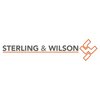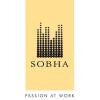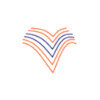Filter interviews by
Indwell Safety Officer Interview Questions, Process, and Tips
Indwell Safety Officer Interview Experiences
1 interview found
Interview Questionnaire
8 Questions
- Q1. Safety precautions at work at hight at 110 fit ?
- Ans.
Safety precautions at work at height of 110 feet
Ensure proper fall protection equipment is worn at all times
Conduct regular safety inspections of equipment and work area
Train employees on proper safety procedures and emergency response
Implement a buddy system for workers at height
Ensure proper lighting and visibility in work area
Establish an emergency response plan in case of accidents or injuries
- Q2. Work at hight?
- Q3. Welding precaution?
- Q4. Cutting,Grinding , precaution
- Q5. Lifting material and loading/ unloading precaution?
- Ans.
Precautions must be taken while lifting and loading/unloading materials to prevent injuries.
Ensure that the weight of the material is within the safe lifting limit.
Use proper lifting techniques such as bending at the knees and keeping the back straight.
Wear appropriate personal protective equipment such as gloves and safety shoes.
Use mechanical aids such as forklifts or cranes if necessary.
Ensure that the loading/unloa...
- Q6. Have u knowledge about 5×800 power plant?
- Ans.
Yes, 5x800 power plant refers to a power plant with five units, each with a capacity of 800 megawatts.
5x800 power plant has a total capacity of 4000 megawatts.
It is a type of thermal power plant that uses coal as fuel.
It requires a large amount of water for cooling purposes.
The power plant may have multiple safety systems in place, such as fire suppression systems and emergency shutdown procedures.
Maintenance and inspe...
- Q7. Have u given ever toolbox talk?
- Q8. What is confined space?
- Ans.
Confined space refers to an area that is enclosed and has limited access or egress.
Examples include tanks, vessels, silos, sewers, and tunnels.
Confined spaces may pose a risk of asphyxiation, entrapment, or exposure to hazardous substances.
Proper training, equipment, and procedures are necessary for safe entry and work in confined spaces.
Top trending discussions






Interview questions from similar companies

Safety Officer Interview Questions & Answers
Megha Engineering & Infrastructuresposted on 25 Jun 2024
(2 Questions)
- Q1. What is HIRA and how to prepare it
- Ans.
HIRA stands for Hazard Identification and Risk Assessment. It is a systematic process to identify potential hazards and assess the associated risks.
Identify all potential hazards in the workplace or task
Assess the likelihood and severity of each hazard
Determine the level of risk for each hazard
Implement control measures to mitigate or eliminate the risks
Regularly review and update the HIRA as needed
- Q2. What is JSA and its purposes
- Ans.
JSA stands for Job Safety Analysis. It is a process used to identify and control hazards in the workplace.
JSA involves breaking down a job into its individual tasks and identifying potential hazards associated with each task.
The purpose of JSA is to prevent accidents and injuries by proactively addressing safety risks.
JSA helps in developing safe work procedures and training employees on how to perform tasks safely.
Exa...
HIRA , JSA, MSDS , PTW
Interview Preparation Tips

I applied via LinkedIn and was interviewed in Mar 2024. There was 1 interview round.
(2 Questions)
- Q1. What are Hazards of Work at Height ?
- Ans.
Hazards of work at height include falls, falling objects, unstable surfaces, and weather conditions.
Falls from height can result in serious injuries or fatalities
Objects falling from height can cause harm to workers below
Unstable surfaces such as ladders or scaffolding can lead to slips or falls
Weather conditions like wind or rain can increase the risk of accidents
Improper use of safety equipment can also contribute to
- Q2. What is Hazard Control Hierarchy ?
- Ans.
Hazard Control Hierarchy is a system used to prioritize and implement control measures to reduce or eliminate workplace hazards.
Hierarchy of controls ranks control measures from most effective to least effective: Elimination, Substitution, Engineering Controls, Administrative Controls, Personal Protective Equipment (PPE)
The goal is to eliminate or reduce hazards at the source rather than relying on PPE
Example: Instead ...
Interview Preparation Tips

Safety Officer Interview Questions & Answers
Shapoorji Pallonji Groupposted on 19 Oct 2023

(1 Question)
- Q1. Salary, location jonlb
(1 Question)
- Q1. Work permit, checklist, hira , JSA

Interview Questionnaire
9 Questions
- Q1. Whatvis mean risk assessment
- Ans.
Risk assessment is the process of identifying, evaluating, and prioritizing potential risks to determine appropriate control measures.
Risk assessment involves identifying hazards and potential consequences.
It evaluates the likelihood and severity of each risk.
Prioritization helps in determining which risks require immediate attention.
Control measures are implemented to mitigate or eliminate identified risks.
Examples in...
- Q2. What's is mean by hazards
- Ans.
Hazards refer to potential sources of harm or danger that can cause injury, illness, or damage to property.
Hazards can be physical, chemical, biological, or psychological in nature.
Examples of hazards include slippery floors, toxic chemicals, infectious diseases, and workplace stress.
Identifying and assessing hazards is an important part of ensuring safety in any environment.
Effective hazard control measures can help t...
- Q3. Wahis mean by work permit
- Ans.
A work permit is a document that authorizes a person to perform a specific job or task in a designated area.
Work permits are used to ensure that work is carried out safely and efficiently.
They are typically issued by a supervisor or manager and must be obtained before starting work.
Work permits may include information such as the type of work to be performed, the hazards involved, and the safety precautions that must b...
- Q4. Whas is mean by msds
- Ans.
MSDS stands for Material Safety Data Sheet.
MSDS is a document that provides information about the hazards of a particular substance or product.
It includes information on the chemical composition, physical properties, and safe handling procedures.
MSDS is required by law for all hazardous substances and products.
It is important for workers to have access to MSDS to ensure their safety in the workplace.
- Q5. What's is mean by lti
- Ans.
LTI stands for Lost Time Injury, which refers to a work-related injury or illness that results in time off from work.
LTI is a common safety metric used in workplaces to track and analyze workplace injuries and illnesses.
It is calculated by dividing the number of lost workdays by the total number of hours worked.
LTI is an important indicator of workplace safety and can help identify areas for improvement.
For example, if...
- Q6. What is mean by hot work
- Ans.
Hot work refers to any activity that involves open flames or generates heat and sparks.
Examples include welding, cutting, brazing, soldering, grinding, and using a torch.
Hot work requires a permit and must be conducted in a designated area with proper ventilation and fire safety measures.
Workers must wear appropriate personal protective equipment (PPE) and be trained in hot work safety procedures.
Hot work can pose a se...
- Q7. What is mean by cold work
- Ans.
Cold work refers to any work that is done on a metal at room temperature or below.
Cold work can include processes like bending, punching, or rolling.
It can increase the strength and hardness of the metal, but can also make it more brittle.
Cold work is often used in the manufacturing of metal products like pipes, wires, and sheet metal.
It is important to take safety precautions when performing cold work, as it can creat
- Q8. What's is mean by hieght work
- Ans.
Height work refers to any work that is performed at a height above ground level.
Examples of height work include working on rooftops, climbing ladders, and working on scaffolding.
Height work requires proper safety equipment such as harnesses, helmets, and safety ropes.
Workers performing height work should be trained in proper safety procedures and should be aware of the risks involved.
Height work can be dangerous and ca...
- Q9. What is mean by excavation
- Ans.
Excavation refers to the process of digging or removing earth or other materials from the ground.
Excavation is commonly used in construction and mining industries.
It involves the use of heavy machinery such as excavators, bulldozers, and backhoes.
Excavation can be done for various purposes such as building foundations, laying pipelines, or creating underground tunnels.
Safety measures such as shoring, sloping, and bench...
Interview Preparation Tips

Safety Officer Interview Questions & Answers
Megha Engineering & Infrastructuresposted on 23 Aug 2023
I applied via Naukri.com

(5 Questions)
- Q1. How many type of hazard
- Ans.
There are three main types of hazards: physical, chemical, and biological.
Physical hazards include slips, trips, falls, noise, vibration, and extreme temperatures.
Chemical hazards involve exposure to harmful substances like gases, liquids, and dusts.
Biological hazards come from exposure to viruses, bacteria, fungi, and parasites.
- Q2. What is confined space
- Ans.
Confined space is an area that is not designed for continuous occupancy, has limited entry and exit points, and may have poor ventilation.
Confined spaces are typically small and enclosed, making it difficult to enter and exit.
These spaces may contain hazardous substances or conditions that can be harmful to workers.
Examples of confined spaces include storage tanks, silos, tunnels, and sewers.
- Q3. What is hazard of work at height
- Ans.
Working at height poses risks of falls, falling objects, and structural collapses.
Falls from height can result in serious injuries or fatalities
Objects dropped from height can cause harm to workers below
Structural collapses can occur due to improper installation or maintenance
Safety measures such as guardrails, harnesses, and regular inspections are crucial to prevent accidents
- Q4. What is safety in construction
- Ans.
Safety in construction refers to the measures taken to prevent accidents, injuries, and fatalities on construction sites.
Ensuring proper training and supervision of workers
Implementing safety protocols and procedures
Providing personal protective equipment (PPE)
Regular inspections of equipment and work areas
Emergency preparedness and response plans
Examples: Fall protection systems, scaffolding safety measures
- Q5. How many type of fire
- Ans.
There are five main classes of fire: Class A, Class B, Class C, Class D, and Class K.
Class A fires involve ordinary combustible materials such as wood, paper, and cloth.
Class B fires involve flammable liquids like gasoline, oil, and grease.
Class C fires involve energized electrical equipment.
Class D fires involve combustible metals like magnesium, titanium, and sodium.
Class K fires involve cooking oils and fats commonl
Interview Preparation Tips

Safety Officer Interview Questions & Answers
Shapoorji Pallonji Groupposted on 30 May 2022
I applied via Naukri.com and was interviewed in Apr 2022. There were 4 interview rounds.

How to implement workers to do work in a Safety process.
How to minimize and control hazard.
(2 Questions)
- Q1. Salary discussion and about previous work.
- Q2. How much expection about salary.
Interview Preparation Tips
- About safety hazard.

Safety Officer Interview Questions & Answers
Megha Engineering & Infrastructuresposted on 19 Jun 2021
I applied via Walk-in and was interviewed in Dec 2020. There was 1 interview round.
Interview Questionnaire
1 Question
- Q1. 1 Tell me about your self 2 Project work 3 some basic topics related to safety 4 C.V. basic topics
Interview Preparation Tips

Safety Officer Interview Questions & Answers
Shapoorji Pallonji Groupposted on 26 Dec 2021
I applied via Walk-in and was interviewed in Nov 2021. There was 1 interview round.
Interview Questionnaire
21 Questions
- Q1. HIRA full from
- Ans.
HIRA stands for Hazard Identification and Risk Assessment.
HIRA is a systematic process of identifying potential hazards and analyzing the associated risks.
It involves identifying the hazards, assessing the risks, and implementing control measures to mitigate the risks.
HIRA is an important tool for safety officers to ensure the safety of employees and the workplace.
Examples of hazards that can be identified through HIRA...
- Q2. ISO stander
- Q3. IBOSh full from
- Ans.
I'm sorry, but the question is not clear and seems to be incomplete.
Please provide more context or rephrase the question.
Without proper information, I cannot provide a relevant answer.
Kindly clarify the question so that I can assist you better.
- Q4. Safety belt lanyard length
- Q5. NEbosh full from
- Q6. Audit report
- Q7. Job related
- Q8. Crane load capacity
- Q9. LMR full from
- Ans.
LMR full from refers to a situation where the Land Mobile Radio system is at maximum capacity.
LMR full from means that the Land Mobile Radio system is unable to accommodate any more users or communications.
This can occur when all available channels or frequencies are in use.
It may result in communication delays or the inability to establish new connections.
LMR full from can impact the effectiveness of emergency respons...
- Q10. Work to permit
- Q11. EHS meeting
- Q12. Road safety
- Q13. Electrical safety
- Q14. Fire hazard
- Q15. What is safety
- Ans.
Safety is the state of being protected from harm, danger, or injury.
Safety involves identifying and assessing potential hazards
It requires implementing measures to prevent or mitigate those hazards
It involves training and educating individuals on safe practices
Safety is a continuous process that requires ongoing evaluation and improvement
Examples of safety measures include wearing personal protective equipment, followi...
- Q16. Shut down work
- Ans.
Shutting down work is a crucial safety measure to prevent accidents and ensure the well-being of workers.
Shutting down work may be necessary in case of an imminent danger or hazard that cannot be immediately controlled.
It is important to have clear protocols and procedures in place for shutting down work in different scenarios.
Examples of situations that may require work shutdown include gas leaks, chemical spills, str...
- Q17. CSR activities
- Q18. Foundation work relate
- Q19. Severity rate
- Q20. What is accident
- Ans.
An accident is an unexpected and unintentional event that causes harm or damage.
Accidents can happen in any setting, including workplaces, homes, and on the road.
They can result in physical injuries, property damage, or both.
Accidents can be caused by human error, equipment failure, or environmental factors.
Examples of accidents include slips and falls, car crashes, and machinery malfunctions.
- Q21. What is incident
- Ans.
An incident is an unplanned event that results in injury, damage, or loss.
Incidents can occur in any workplace or environment
They can range from minor incidents such as slips and falls to major incidents such as explosions or fires
Incidents should be reported and investigated to prevent future occurrences
Proper safety measures and training can help prevent incidents from happening
Interview Preparation Tips

Safety Officer Interview Questions & Answers
Shapoorji Pallonji Groupposted on 2 Nov 2021
I applied via Referral and was interviewed before Nov 2020. There was 1 interview round.
Interview Questionnaire
3 Questions
- Q1. About my Self
- Q2. Height work safety & Control measures
- Ans.
Height work safety involves implementing control measures to prevent falls and injuries.
Conducting a risk assessment before starting any work at height
Providing appropriate training and equipment for workers
Implementing a fall protection plan
Regularly inspecting equipment and ensuring it is in good condition
Establishing clear communication and emergency procedures
Examples of control measures include guardrails, safety ...
- Q3. Engineering control, legal control , administrative control, ppe
Interview Preparation Tips
Indwell Interview FAQs
Tell us how to improve this page.
Indwell Interviews By Designations
- Indwell Assistant Resident Engineer Interview Questions
- Indwell Project Manager Interview Questions
- Indwell Safety Officer Interview Questions
- Indwell Safety Supervisor Interview Questions
- Indwell Senior Electrical Engineer Interview Questions
- Indwell Store Manager Interview Questions
- Indwell Welding Piping Inspector Interview Questions
Interview Questions for Popular Designations
- Safety Supervisor Interview Questions
- Fire & Safety Officer Interview Questions
- Senior Safety Officer Interview Questions
- Safety Engineer Interview Questions
- Safety Manager Interview Questions
- Drug Safety Associate Interview Questions
- Safety Supervisor, Safety Officer Interview Questions
- Safety Executive Interview Questions
- Show more
Safety Officer Interview Questions from Similar Companies
Indwell Safety Officer Reviews and Ratings
based on 10 reviews
Rating in categories
|
Safety Officer
30
salaries
| ₹2 L/yr - ₹4.8 L/yr |
|
Mechanical Engineer
23
salaries
| ₹1.7 L/yr - ₹7.2 L/yr |
|
Engineer
13
salaries
| ₹1.8 L/yr - ₹4 L/yr |
|
Senior Engineer
11
salaries
| ₹2.2 L/yr - ₹5.8 L/yr |
|
Safety Supervisor
9
salaries
| ₹2 L/yr - ₹3.5 L/yr |

Godrej Properties

Sobha

Prestige Group

DLF
- Home >
- Interviews >
- Indwell Interview Questions >
- Indwell Safety Officer Interview Questions









